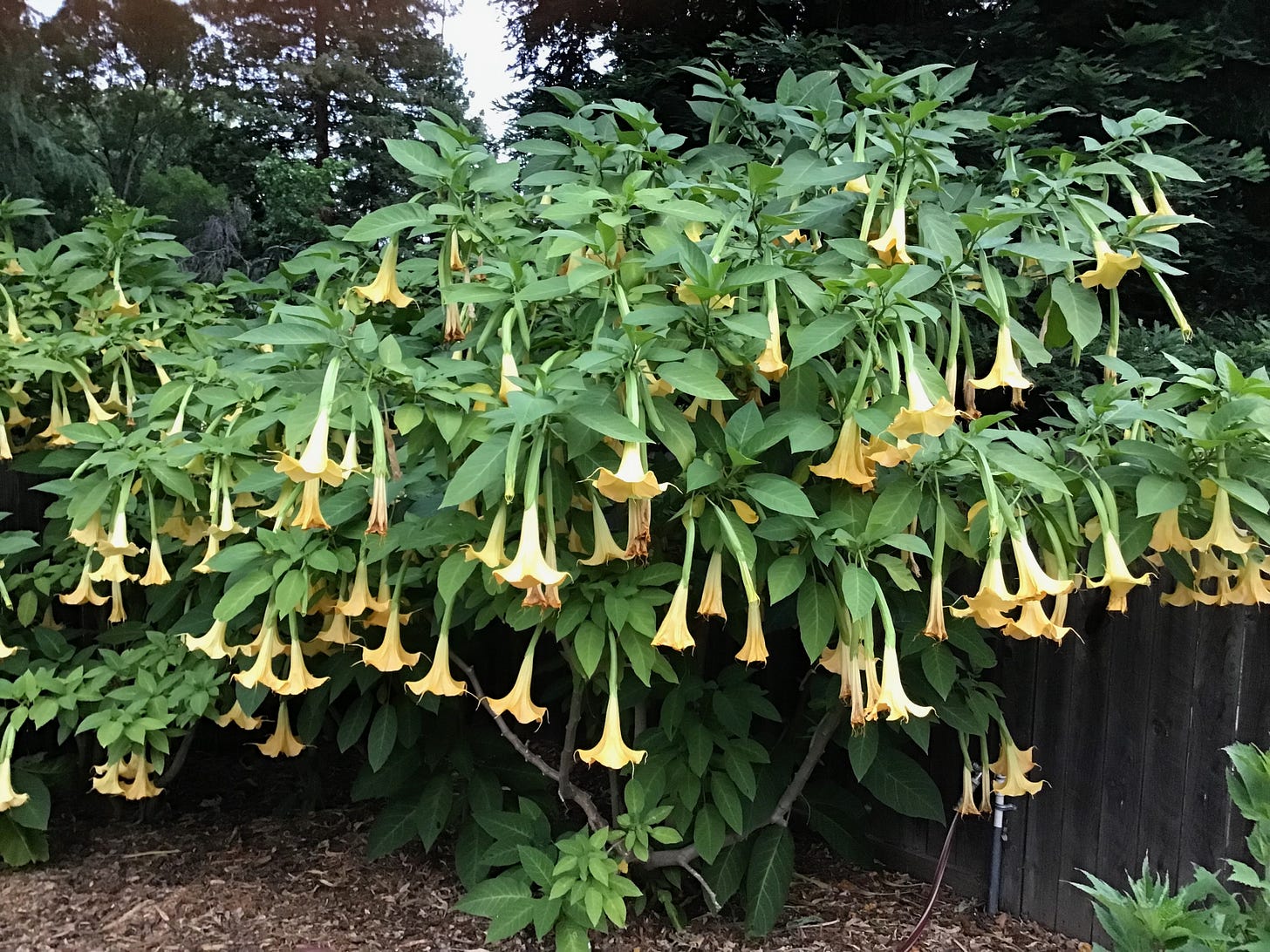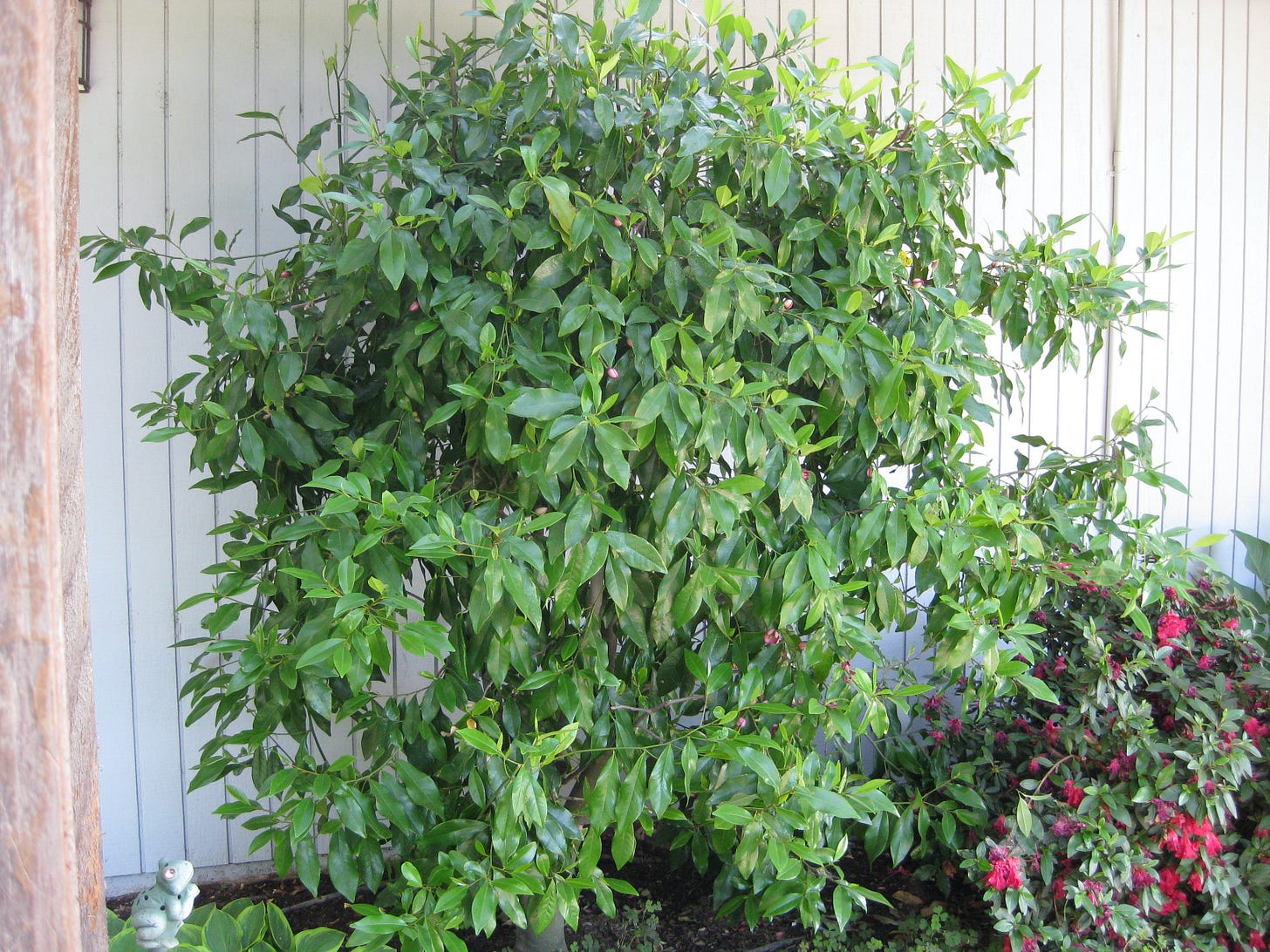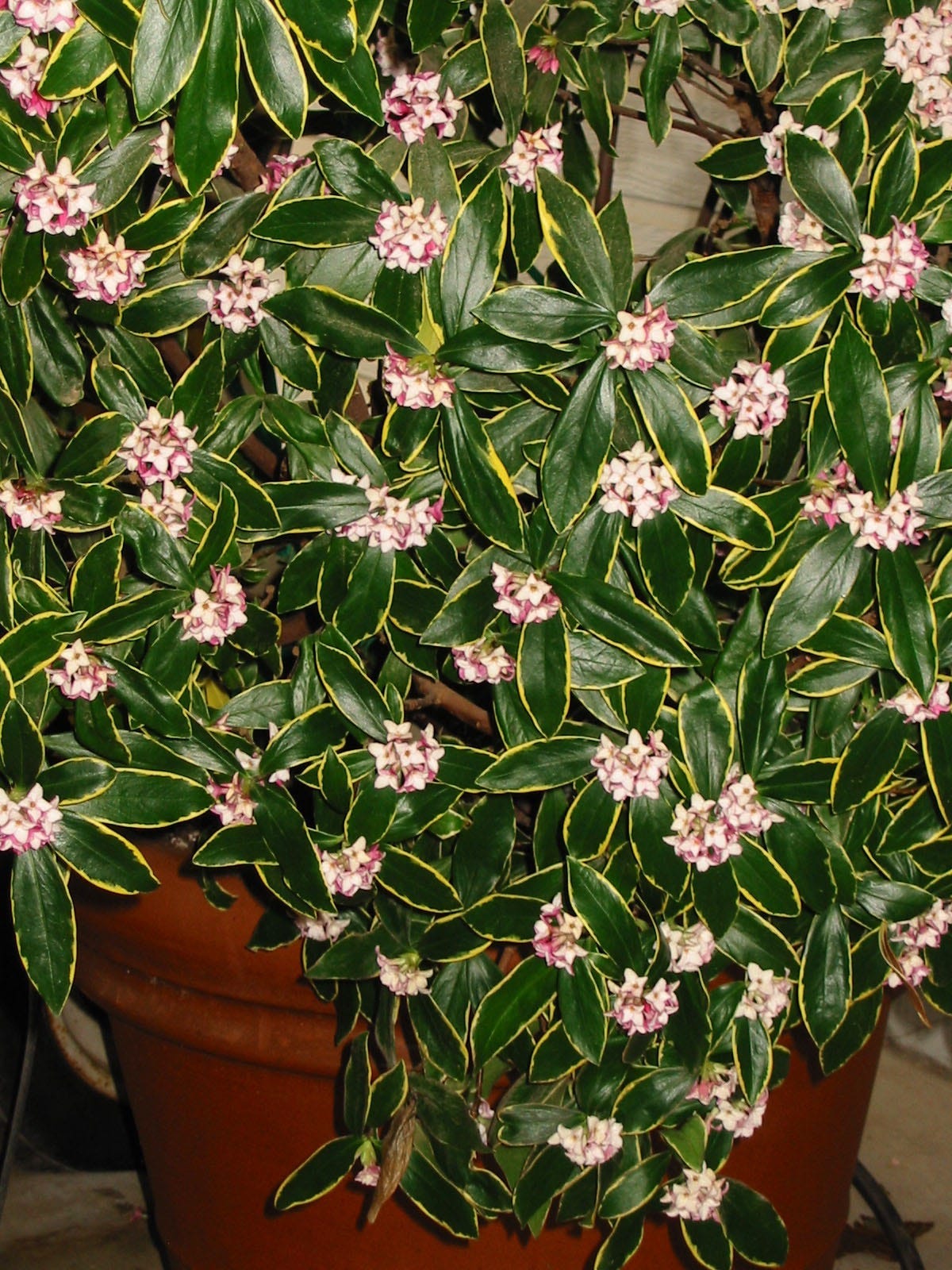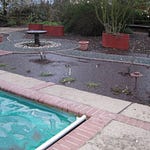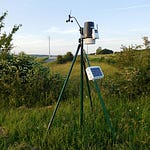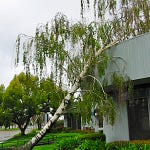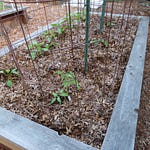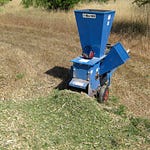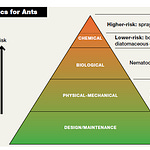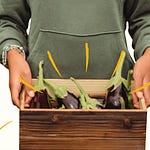GARDEN SHOWS FOR THE NOSE
Looking for a garden show for your nose? There are a wide variety of fragrant plants that do well in various USDA zones, providing olfactory pleasure at various times of the year. Besides such sensory stalwarts as gardenias and roses, there are many other aromatic perennials and shrubs that can add a welcome scent to your evening stroll through the yard.
• Brugmansia versicolor ‘Charles Grimaldi’ (pictured above, USDA Zones 9, 10). Also known as “Angel’s Trumpet”, this is a fast-growing, flowering shrub that can get 10 feet tall in two or three years. The show-stopper part of this plant is the nearly non-stop bloom in mild areas. This Brugmansia features huge (over a foot long), yellow, trumpet-shaped flowers. An added bonus in late spring and early summer is the warm evening aroma of those blooms, when the air is still: a perfume-like scent that hits your nose as soon as you step into the yard. It does best with some afternoon shade and regular watering. A word of warning about this plant: all parts are considered poisonous, so it may not be right for the gardener living with indiscriminate munchers, either pets or children. However, there are plenty of other plants available that give off a warm-weather show for the nose in the evening:
• Nocturnal daylilies (Hemerocallis). Most USDA zones. Nocturnal daylily flowers open late in the afternoon and stay open throughout the evening until the morning. Many named hybrids are available, including the fragrant Arctic Ruffles, Nathan Carroll, Full Moon Rising and Winds of Tide.
• Tuberose (Polianthes tuberosa). Most USDA Zones. The blooms of this perennial tuber, a native of Mexico, will fill your backyard with a heady scent during summer evenings. The grass-like leaves can get to three feet tall, with white, tubular flowers clustered at the top. A good choice for containers, the tuberose needs regular water to look its best. If your winter temperatures stay above 20 degrees, the rhizomes can stay in the ground all year. Otherwise, lift and store in a protected area.
• Flowering Tobacco (Nicotiana sylvestris). Most USDA zones. The fragrant, tubular flowers of this tender perennial (usually planted as an annual) are attractive to hummingbirds and butterflies. The plant itself gets about four to five feet tall and two feet wide. Another flowering tobacco variety with great nighttime aroma is the ‘Grandiflora’ (Nicotiana alata).
• Four O' Clocks (Mirabilis jalapa). (Most USDA zones; treat as an annual in colder regions.) This tuberous rooted perennial grows quickly to three feet high and wide, with trumpet-like flowers in white, red or yellow that open at about the time you get home from work. Although the top will die back from a freeze, it will usually sprout the following spring.
• Star Jasmine (Trachelospermum jasminoides). (USDA zones 7-10) A popular evergreen twining vine. It is most noted for the fragrance of its small, white flowers this time of year. Can be used against a trellis, or as a spreading ground cover. Does well with afternoon shade and regular water.
• Moonflower (Ipomoea alba). (USDA zones 9-10, treat as a summer annual elsewhere). A relative of the morning glory, the moonflower is a perennial vine that shoots up 20 feet or more in one season, perfect for a fence or trellis. The six-inch white flowers are quite fragrant, and open in the evenings or cloudy days.
• White Evening Primrose (Oenothera caespitosa). (Most USDA zones). Grows about a foot tall and wide. This perennial has fragrant, three-inch white flowers that put on their profuse blooming show during summer evenings.
Other fragrant shrubs for daytime aroma
• Banana shrub (Magnolia figo, formerly Michelia figo). (USDA Zones 8-10). This evergreen shrub has small, yet very fragrant pink/cream flowers during April and May. The late afternoon aroma may remind you of Juicy Fruit gum. Grows slowly to 8 feet. Prefers partial shade.
• Sweet olive (Osmanthus fragrans). (USDA zones 8-10). The scent of the flowers of this 10-foot tall evergreen shrub in spring and early summer will conjure up images of apricots. Heavy bloom in late spring through early summer, but will bloom sporadically throughout the year in mild winter areas.
• Sweetbox (Sarcococca ruscifolia). (USDA zones 8-10). An evergreen shrub for shady areas, sweetbox is at its most fragrant during late winter and early spring.
• Winter Daphne (Daphne odora). (USDA zones 8-10). This evergreen shrub solves two vexing garden problems: a plant that thrives in full shade (part shade in cooler areas); and, produces fragrant blooms in December and January. One of the best for New Year’s aroma, it can be a fussy plant, it needs good drainage, and it does better with less water during dry periods. Just give it enough to keep from wilting. And good luck.
• Wintersweet (Chimonanthus praecox). (USDA Zones 8-9) This rangy (10-15 feet high) shrub produces spice-like yellow flowers before it leafs out each winter. It prefers the colder areas in those zones. Put it in a protected area to avoid frost damage, ideally near a door or window.
• Sages (Salvia). (Zones vary by species. Salvia officinalis is one of the hardiest). The California Native Plant Society says the state’s many native sages are all fragrant, but Cleveland sage (Salvia clevelandii) is in a class by itself. Most sage varieties prefer full sun; natives such as the Cleveland sage can get by with little water. This evergreen small shrub has gray foliage is aromatic, and its lavender flower spikes are perfumed, attracting hummingbirds and bees, as well as your nose.
• Gardenia. (USDA zones 8-10, hardy down to 20 degrees). Of the many gardenia varieties that do well, the “Mystery”, “Kleim’s Hardy”, “Summer Snow”, “Veitchii” and “White Gem” are noted for their fragrance. Wherever azaleas and rhododendrons thrive in your yard is where a gardenia would like to be: in part shade, acid soil, regular watering. Feed with an acid based fertilizer.
• Pelargoniums. (USDA zones 8-10, grown as an annual elsewhere.) Commonly referred to as geraniums, they are not a true geranium. Many scented geraniums are available, noted for their aromatic foliage. According to the Sunset National Garden book, scented varieties usually have names that include the words, “apple” (Pelargonium odorartissimum), “lemon” (P. crispum), “lime” (P. nervosum), “peppermint” (P. tomentosum) or “rose” (P. capitatum or graveolens). Tolerant of heat and humidity.
Why Do Certain Aromas Trigger Long-Ago Memories?
From Discovery Magazine, Nov. 27, 2019:
Our nose can evoke powerful, vivid memories if it catches a familiar scent. The smell of pine needles may take you back to summer camp, a roasting turkey transports you decades in time to grandma’s house for the holidays. This powerful connection between scent and memory is sometimes called the Proust phenomenon, a nod to French author Marcel Proust, who eloquently described a potent memory of childhood evoked by the smell of a madeleine biscuit dipped in tea.
But the link is more than literary. Smell is the only sense that doesn’t pass through the thalamus before reaching the forebrain. The thalamus functions as an operator switchboard of sorts, connecting sensory inputs from our eyes, ears, tongue and touch to the right parts of the brain so we can register and make sense of them. But scent bypasses this switchboard entirely, in favor of a direct line. What’s more, the bundle of nerves that detects scent molecules, the olfactory bulb, has a high density of connections near the amygdala and hippocampus, which are involved in emotional response and memory formation, respectively.
That's why smells make our brains form strong, emotionally salient memories and at a subconscious level.
And Finally, Repurposing Garden Tools
Thank you for listening to the Garden Basics with Farmer Fred podcast! It’s available wherever you get your podcasts. Please share it with your garden friends.
As an Amazon Associate, I earn from qualifying purchases from some of the underlined links in the newsletter. This is how I am trying to keep this a free newsletter. And as long as you buy whatever you want from Amazon using any of those links to get into the Amazon site, I get a few pennies. Thank you.
Thanks for Subscribing and Spreading the Word About the Beyond the Basics: The Garden Basics with Farmer Fred newsletter, I appreciate your support.
Fred Hoffman is also a University of California Cooperative Extension Master Gardener in Sacramento County.



